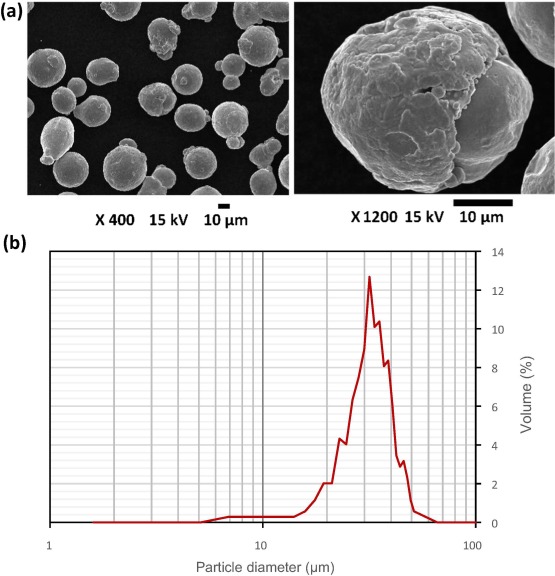Applied Thermal Engineering ( IF 6.1 ) Pub Date : 2018-07-24 , DOI: 10.1016/j.applthermaleng.2018.07.111 Davoud Jafari , Wessel W. Wits , Bernard J. Geurts

|
This paper examines the so-called capillary performance of a freeform porous structure fabricated by advanced 3D metal printing technology. The fabricated structure is intended as wick for two-phase heat transfer devices, in which it contributes to the transport of a liquid working fluid through capillary forces. A stainless steel porous structure is additively manufactured and characterized in terms of its porosity (ε), effective pore radius (reff), liquid permeability (K) and capillary performance (K/reff). Forced liquid flow tests with deionized water as working fluid are conducted to determine the permeability. Capillary penetration experiments are performed by means of height-time (h-t) and weight-time (w-t) techniques with different fluids to characterize the capillary performance of the printed wicks. The experimentally determined values of permeability and pressure drop are compared with the well-known Darcy’s law and Forchheimer corrections. The Kozeny–Carman correlation is found to predict the experimental values of permeability at lower flow velocities (0.07 m/s corresponding to a Reynolds number of 0.95), while at higher velocities an under-prediction of the experimental data is observed. The Kozeny-like model taking into account inertial effects is updated in terms of constant values that fit with the experimental data very well. The accuracy of the theoretical models for characterizing capillary rate-or-rise processes is also assessed. It is concluded that the capillary penetration of liquids in the 3D-printed wick follows the law: h(t) ∼ t1/3 at intermediate stage. Observation confirms that the gravitational effect played a significant role in the 3D-printed wick, introducing slower capillary rising. Compared to sintered powder, screen mesh and composite wicks selected from literature, the designed 3D-printed wick enhances the capillary performance. It is concluded that due to the large permeability and capillary performance (K/reff), heat pipes in conjunction with a 3D-printed wick can significantly augment their heat transfer.
中文翻译:

金属3D打印的用于热管的灯芯结构:毛细管性能分析
本文研究了通过先进的3D金属打印技术制造的自由形式多孔结构的所谓毛细管性能。所制造的结构旨在用作两相传热装置的芯,其中,它通过毛细作用力有助于液体工作流体的传输。增材制造不锈钢多孔结构,并根据其孔隙率(ε),有效孔半径(r eff),液体渗透率(K)和毛细管性能(K / r eff)进行表征。用去离子水作为工作流体进行强制液体流动测试,以确定渗透率。毛细管渗透实验是通过高程(ht)和重量时间(wt)使用不同流体的技术来表征印刷芯的毛细管性能。将实验确定的渗透率和压降值与众所周知的达西定律和Forchheimer校正进行比较。发现Kozeny-Carman相关性可在较低流速(0.07 m / s,对应于0.95的雷诺数)下预测渗透率的实验值,而在较高流速下,可观察到实验数据的预测不足。考虑惯性效应的类似Kozeny的模型会根据与实验数据非常吻合的常数值进行更新。还评估了表征毛细管速率上升过程的理论模型的准确性。结论是,液体在3D打印的灯芯中的毛细管渗透遵循以下定律:h(t) 〜t 1/3在中间阶段。观察结果证实,重力效应在3D打印的灯芯中起了重要作用,导致毛细管上升较慢。与从文献中选择的烧结粉末,筛网和复合灯芯相比,设计的3D打印灯芯可增强毛细管性能。结论是,由于大的渗透性和毛细管性能(K / r eff),热管与3D打印的灯芯结合可以显着增强其热传递。































 京公网安备 11010802027423号
京公网安备 11010802027423号